Plan your Hangzhou tour? On the Top 10 Hangzhou Attractions list, Liuhe Pagoda is a must see sight on your first time trip to Hangzhou. “Liuhe” literally means the harmony of east, west, south, north, heaven and earth, the six Buddhist ordinances. So Liuhe Pagoda is often translated in English as “Six Harmonies Pagoda”.
ABC of Six Harmonies Pagoda
Though it is one of the six ancient cities in China, there are very few authentic relics left from ancient time in Hangzhou. Many of the historic sites or ancient buildings are replicas and reproductions with their original things destroyed during the 10-year cultural revolution (1966-1976) in China. Fortunately Liuhe Pagoda has surviced a number of natural and man-made disasters, making it more valuable and worth visiting.
The original Liuhe Pagoda was built in 970AD aimed at controlling the tidal bore of Qiantang River and serving as a lighthouse as well. However, the pagoda was completely destroyed during warfare in the year 1121.
Six Harmonies Pagoda itself is mainly composed of two parts: the 7-storey inner stone pagoda and 13-storey outer wooden pagoda. The inner stone pagoda of the present Liuhe Pagoda is proved to be the original one dating back to the Southern Song Dynasty (1127–1279). The outer wooden structure was built in the Qing Dynasty (1368 – 1644). The pagoda is octagonal in shape and about meters in height.
Today Six Harmonies Pagoda is more than a single pagoda, it has much more to offer. It has become Liuhe Pagoda Scenic Area, which is composed of 4 major areas – Liuhe Pagoda Area, Kaihua Temple Area, Liuhe Stele Pavilion and Liuhe Pagoda Garden Area.
Location of Six Harmonies Pagoda
Liuhe Pagoda (Six Harmonies Pagoda) stands on Yuelun Hill in the south of downtown Hangzhou and northen bank of Qiantang River, around 6.5km from the city center.
How to get to Six Harmonies Pagoda
A pleasant taxi ride to Liuhe Pagoda costs you about RMB 25. You may also take the public buses of Line Y5, K808, K599 and 504 at the bus fare of 2 or 3 yuan. Riding a bike to Six Harmonies Pagoda is not a bad idea if you are fit and like cycling. There is a big docking station below the Yuelun Hill.
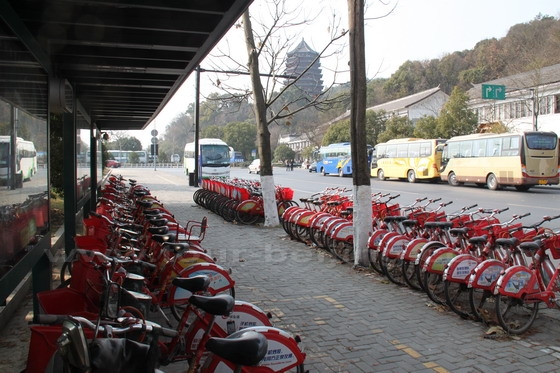
By the main entrance up to Liuhe Pagoda and below Yuelun Hill, there is a clean and well equipped toilet designed for Liuhe Pagoda visitors.
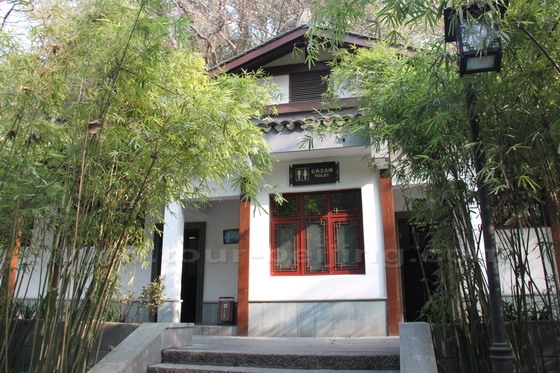
The ticket office lies by the main enetrance to Lihe pagoda. Entrance fee: RMB 20 + RMB 10 for Pagoda climbing.
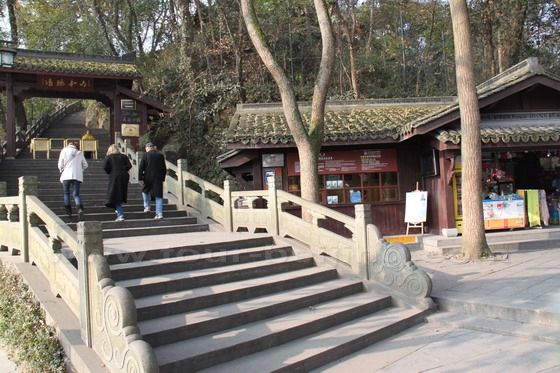
Climb over dozens of stone steps up to the platform on Yuelun Hill where stands the Liuhe Pagoda. Hangzhou is really a garden city which is still much greener though it is deep into the cold winter.
Just several steps below the platform of the hill, I grab a photo of the magnificent Liuhe Pagoda flanked by red maple trees and camphor trees.
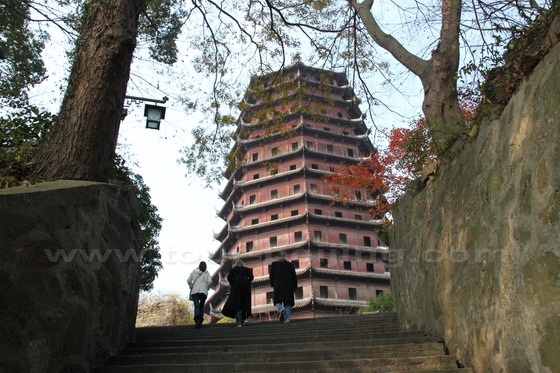
Liuhe Pagoda Scenic Area is composed of 4 areas: Liuhe Pagoda Area, Kaihua Temple Area, Liuhe Stele Pavilion Area and Liuhe Pagoda Garden Area, which is stated on a rock signboard.
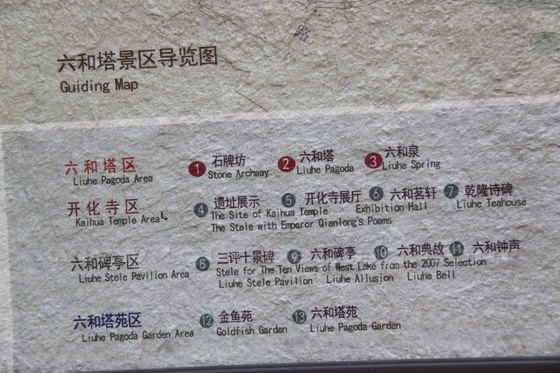
Climb up Liuhe Pagoda
The highlight is to climb up to the top floor, the 7th floor and have a bird-eye view of Qiantang River and surrounding hills. The closing time is 17:30. No smoking. It is stipulated that there is a control over the number of visitors inside the pagoda, which is limited to 200 people.
If at a time 200 visitors climbing the pagoda, you have to wait. Now it is winter time, there are just a few of us luxurily enjoy the least tourist time inside the pagoda.
Acending the spiral staircases floor by floor. The interior has been reenforced and looks much solid and strong. Wooden spiral staircases, beautiful ceiling and mysterious pattterns and symbols.
Acending the spiral staircases floor by floor
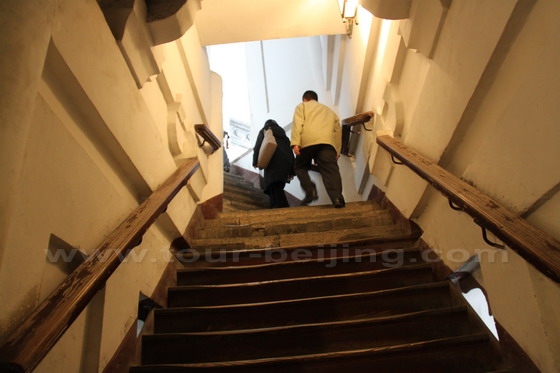
Approaching the 7th floor, the top storey.
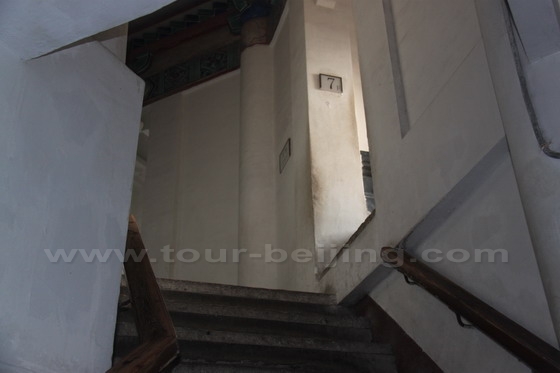
Having a bird’s-eye view of Qiantang River Bridge.
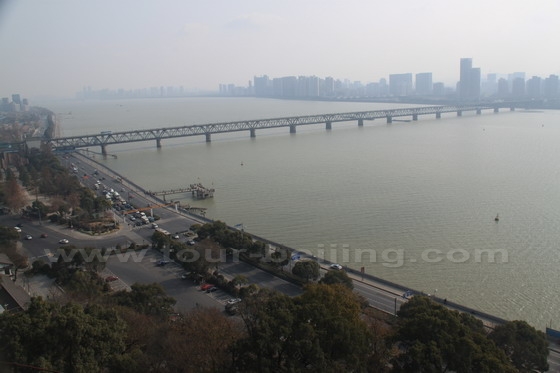
Overlooking the river and surrounding hills.
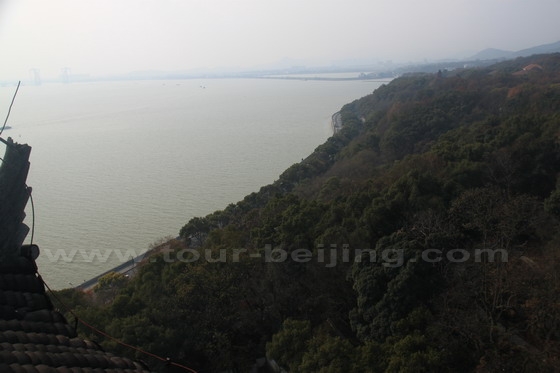
Liuhe Stele Pavilion Area,
the weight is the Liuhe Bell. It was said that since anccient time, the great bell of Liuhe Pagoda had been struck to drive out the God of Tides in order pray for calm tide waves and people lived in peace and prosperity.
In 1996, the sonorous sound of the Liuhe Bell was heard again. It has become a traditional activity for local people to strike Liuhe Bell during the Chinese new year’s eve to pray for blessings.
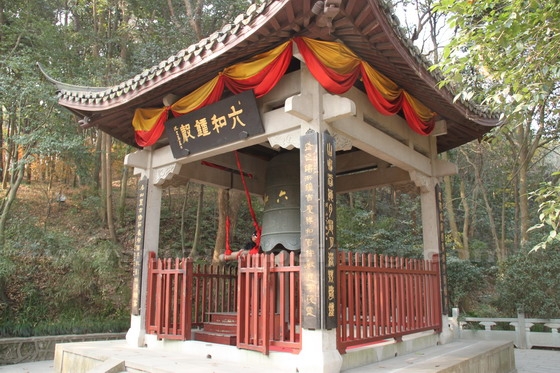
Liuhe Pagoda Garden Area
It has two parts – Goldfish Garden and Imitation Ancient Pagoda Garden. Liuhe Pagoda was said to be the birthplace of goldfish in Hangzhou. Goldfish Garden with a pond.
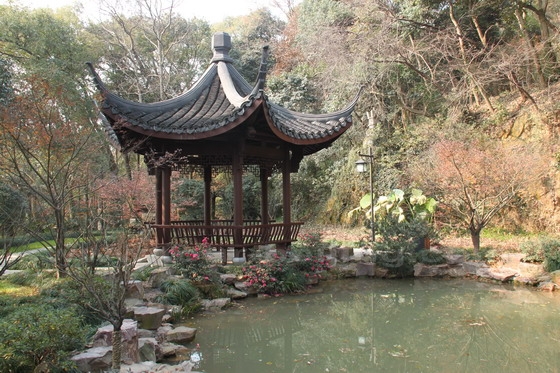
Imitation Ancient Pagoda Garden has numerous imitation ancient pagodas of various dynasties from all over China.
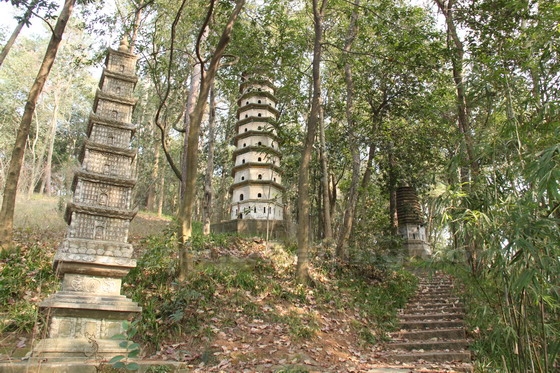
Kaihua Temple Area
When Liuhe Pagoda was built, a temple complex was constructed nearby. The temple was later designated as “Kaihua Temple” by Emperor Taizong (976-997) of Northern Song Dynasty.
In the South Song Dynasty (1227-1279), it was expanded to include one hundred halls. Hence the layout of one temple and one pagoda took shape. Now the temple has turned into a teahouse and an exhition area to showcase the history of Liuhe Pagoda.
Kaihua Temple Area
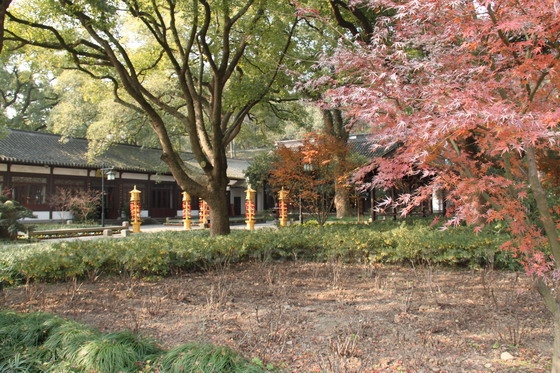
Tip: Hassle-free Hangzhou Guided Tours
If you don’t want to go the do-it-yourself route and prefer the hassle-free escorted tours, here are some options for Hangzhou Guided Tours:
Hangzhou Tour
Hangzhou 4-Day Tour Package
Hangzhou 3-Day Tour Package
Hangzhou Private Tour
Hangzhou Theme Tour
Hangzhou Side Trips
Hangzhou Car Rental with Driver
Further Readings
Top 10 Attractions in Hangzhou
Top 10 Photography Spots in Hangzhou
Night View of West Lake in Hangzhou
The Best hiking trail in Hangzhou
The best time to visit Hangzhou
Hangzhou as a Fashionable City in China
Hangzhou East Railway Station
Hangzhou Airport Arrival Hall
How to Visit Feilai Peak Grottoes in Hangzhou
Where to stay in Hangzhou
Hangzhou Bicycle Hire
Wushan Night Market in Hangzhou
Pedestrian Streets in Hangzhou
Hangzhou’s Best Bars & Nightclubs
Best Way to Visit Hangzhou from Shanghai
How to Visit Grand Canal Hangzhou
How to Visit Xiling Seal Engravers’ Society
How to Visit Liuhe Pagoda
Hangzhou Tea Plantation
How to Visit Leifeng Pagoda
How to visit Hupao Spring (Tiger Spring) Hangzhou
How to Visit Yellow Dragon Cave in Hangzhou
The Best Place to View Sunrise over West Lake Hangzhou
Any questions, just drop a line.





